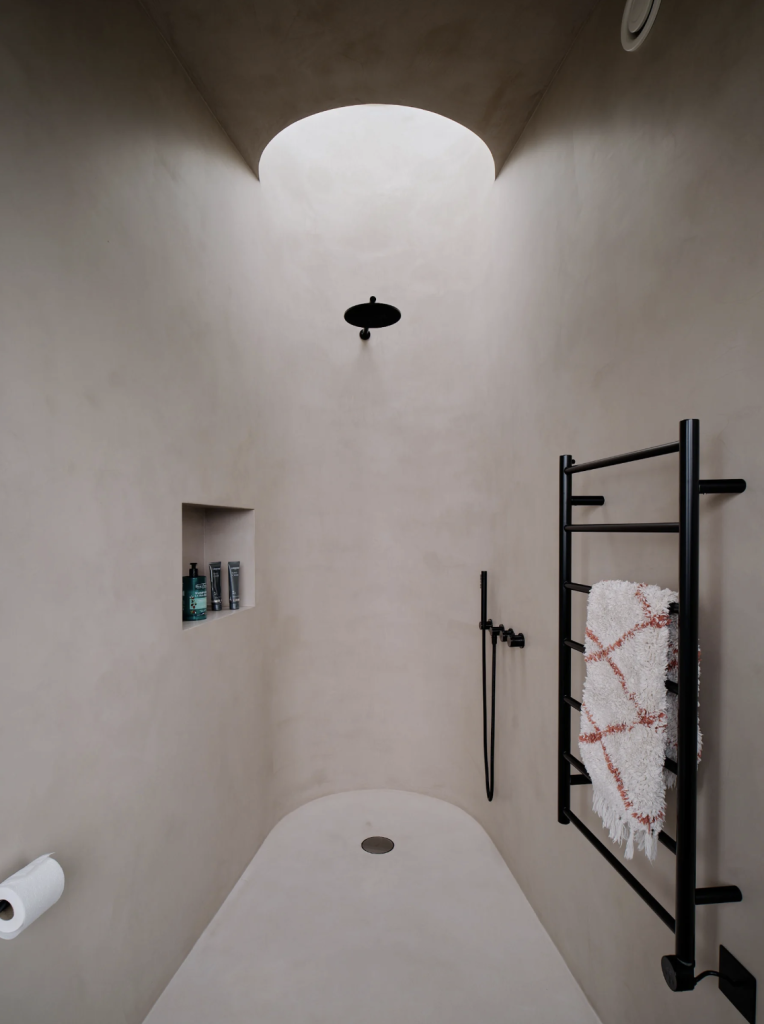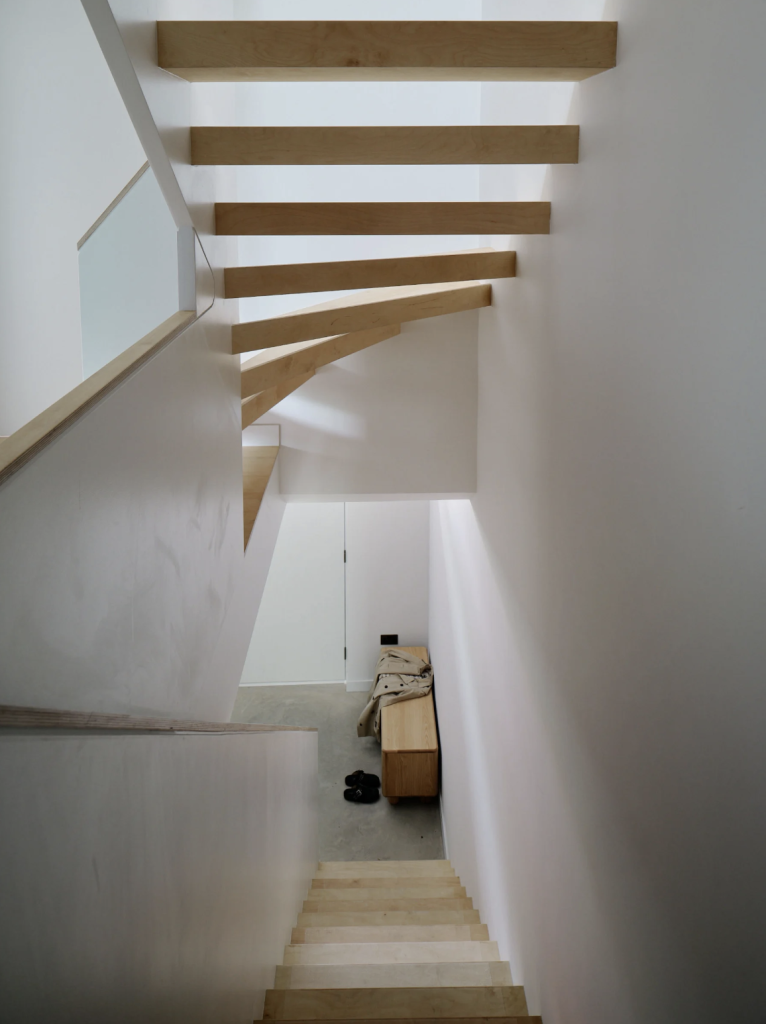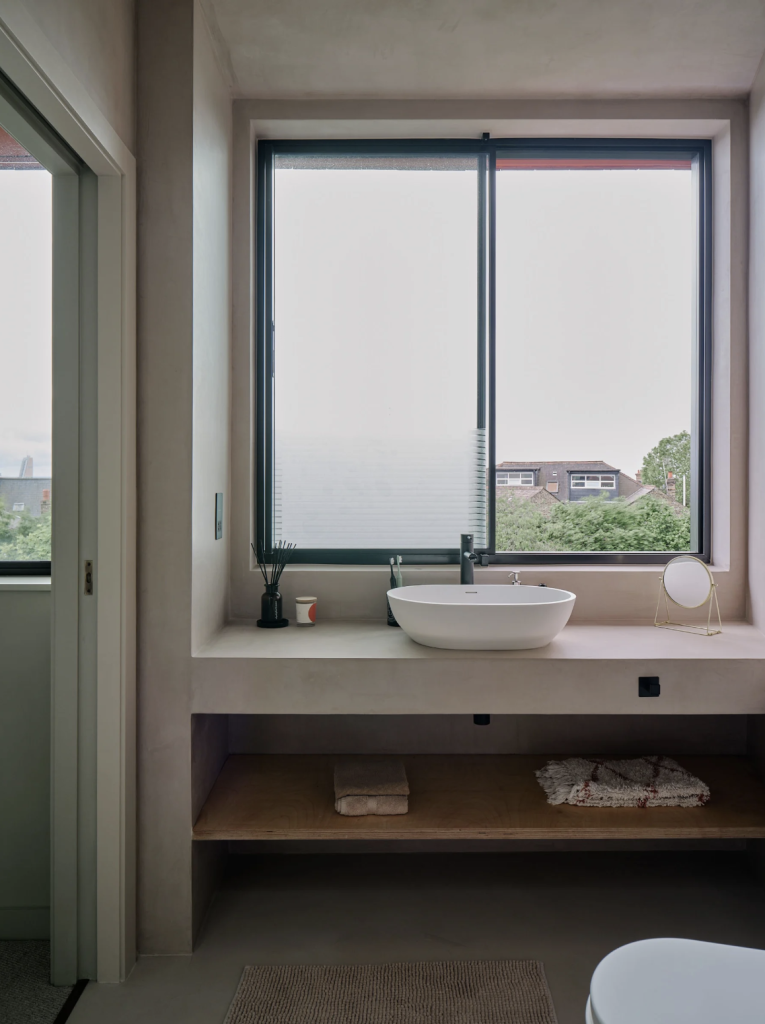In the heart of Kensal Rise, North West London, a mid-terrace house has undergone a revolutionary transformation, emerging as a beacon of sustainable urban living. This ambitious project, by RISE Design Studio, not only reimagines the potential of existing housing stock but also sets a new standard for eco-friendly retrofits in metropolitan areas.

RISE Design Studio were briefed by their clients to create a more open, breathable space with a large kitchen and living area that would seamlessly flow into their garden – the property featured a beautiful orchard, which they wanted to feel like part of their living space. The clients also had an enthusiasm for sustainability, keen to make their home as energy-efficient as possible.

Here, Sean Ronnie Hill, Co-Founder, RISE Design Studio, discusses the details of this brilliant low energy home.
Tell us about some of the new design features that were unique to this project?
There were quite a few fun elements in this one! One of my favourites is this round rooflight we put above the shower in the master ensuite. It’s like showering under the sky during the day and under the stars at night – quite magical, really. We also worked hard to blur the lines between indoors and outdoors. It’s not just about big windows; it’s about creating a feeling that the garden is an extension of the living space. In addition to that we designed a separate garden studio that doubles as a home office. It’s become even more relevant in these work-from-home times! And of course, we used some amazing sustainable materials like clay plaster and Valchromat. They’re not just eco-friendly; they look great too.

Can you talk about the use of materials throughout?
I could talk about materials all day! We used some really exciting materials on Herbert Paradise. Let’s start with the clay plaster – it’s locally sourced, which cuts down on transportation emissions. But what I love about it is how it breathes. It naturally regulates humidity and even absorbs odours and toxins. Plus, it has this wonderful, earthy feel to it.
Then there’s Valchromat, which we used for the kitchen cabinetry and built-in joinery. It’s made from recycled wood fibres and organic dyes. Not only is it sustainable, but it’s also incredibly durable and water-resistant – perfect for a kitchen.

In the bathrooms, we used micro cement. It gives this seamless, modern look, but it’s also practical – easy to clean and water-resistant. And for the floors, we went with polished concrete. It’s great for thermal mass, helping to keep the temperature stable, and it looks pretty amazing too.
What I love about these materials is that they’re not just sustainable – they’re beautiful and functional too. It’s all about finding that sweet spot where eco-friendliness meets great design.

How did you ensure that the existing part of the house worked with the extension and the outside space?
This is always a fun challenge – making old and new play nicely together. We started by creating an open-plan living space that really draws the eye through the house and out to the garden. We installed these huge glass doors at the back that practically disappear when they’re open, blurring the line between inside and outside.
The rear extension was designed to complement the existing structure, not compete with it. And up top, we added a dormer extension that integrates sensitively with the original roofline.

Lighting was key too – we carefully considered both natural and artificial light to create a unified feel throughout. The garden studio, while separate, was designed to feel like a natural extension of the garden fence.
It’s all about creating a flow. When you walk through the house, we want it to feel like one cohesive journey from the original parts through to the new extension and out into the garden.

This project was guided by EnerPHit principles – what is the difference between EnerPHit and Passivhaus?
Good question! Think of Passivhaus as the Olympic gold medal of energy efficiency. It’s incredibly strict and typically used for new buildings. EnerPHit, on the other hand, is more like the silver medal. It’s designed for renovations, which is what we were doing here.
The main difference is that EnerPHit recognises it’s tougher to make an old building as efficient as a new one. So it’s a bit more forgiving, but still miles ahead of standard building regulations. Both aim to create super comfortable, low-energy homes, but EnerPHit gives us a bit more flexibility when we’re working with existing structures.

What energy efficient elements did you incorporate into this project?
We really went to town on this one! We installed an Air Source Heat Pump for water and space heating – it’s like a reverse refrigerator that pulls heat from the outside air. We also included solar PV panels on the southern facing roofs to generate clean electricity.
But the real magic is in the details. We made the house super-insulated and airtight. It’s like wrapping the whole house in a tea-cosy. And to keep the air fresh without losing heat, we installed a Mechanical Ventilation with Heat Recovery system. It’s pretty clever – it takes the warm, stale air from inside, uses it to heat up the fresh air coming in, and then filters it and circulates that around the house. It’s all about keeping the good stuff in and the bad stuff out!

What was the most challenging part about this project?
The trickiest bit was coordinating all the sustainability elements. It’s like a big 3D puzzle, trying to fit everything in just right. We had to figure out the best spots for the solar panels while still allowing for these great big rooflights on the rear extension roof.
Then there’s the MVHR system – routing all that ducting through an existing house is no small feat! We had to be really strategic about where we placed all the valves to make sure it worked efficiently without messing up the aesthetics.

We also spent a lot of time on the nitty-gritty of reducing thermal bridges – those spots mainly at junctions (wall and floor, wall and roof etc) where heat can escape. This meant minimising steel and incorporating more timber into the structure, which is better thermally.
The real challenge was making all these elements work together harmoniously. We wanted to achieve serious energy efficiency – we managed a 75% reduction in energy consumption – but without compromising on the design or comfort of the home. It took a lot of planning and collaboration, but seeing it all come together in the end was incredibly satisfying.
www.risedesignstudio.co.uk | IG: @rise_d_s






